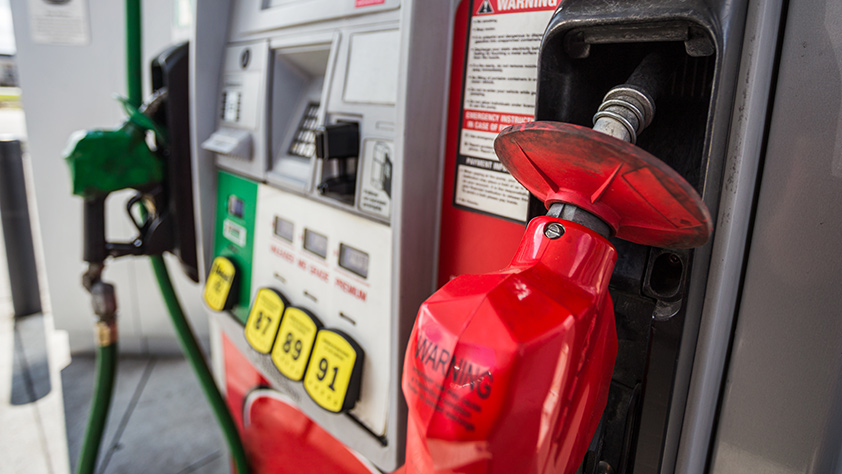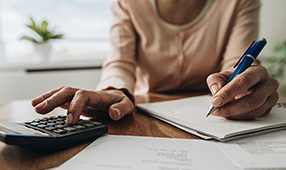Key takeaways
- It’s possible to cut costs at the pump by adjusting your approach to driving and vehicle care.
- Checking apps and websites that alert you to the cheapest gas, keeping up with auto maintenance and more will help you save money on your next road trip.
If you’re one of the millions of Americans who will be taking a road trip this summer, you’ll likely feel a big pinch at the pump. But you can cut your costs significantly all year round—even if you’re just commuting to work—simply by adjusting your approach to driving and vehicle care.
To find out how, check out these 10 expert tips, many of which are backed by research from the U.S. Department of Energy’s highly respected Oak Ridge National Laboratory:
1. Don’t drive too far to fill up. The “victory” in buying the cheapest gas possible is exciting, but what’s the point in driving all around town to compare prices when you’re burning fuel to save on fuel?
“Thanks to technology, you don’t have to do this,” Hamilton says. “There are apps and websites that will tell you where to go.” One of the most popular—and reliable—ones is GasBuddy, which is regularly updated via crowdsourcing.
2. Sign up for gas rewards. Many grocery stores offer gas rewards through their loyalty programs. Earn points while shopping and redeem for cents-per-gallon savings at the pump. Giant, Safeway, SHOP 'n SAVE and Weis are just a few stores that participate.
3. Keep your car in tip-top shape. Preventive maintenance nearly always costs far less than the price you pay for putting it off. By staying on top of the many moving parts in your car, you can improve your gas mileage by 4%.
“This should include the inspection of your ignition and the charging system, along with the battery and the powertrain,” says Jordan Perch, analyst at DMV.com, a top website for advice about cars and driving. “Your spark plugs should get checked, too, to see if they’re worn out. The air filter must be replaced if it gets too dirty. All of this will contribute to a better-performing engine, which consumes less than you would otherwise.”
4. Drive the speed limit. Consumption goes up once the speedometer heads north of 50 mph. In fact, for every 5 mph over 50 mph, you’ll pay an additional 24 cents per gallon.
“Many people drive 5 to 10 miles above the posted speed limit, especially on the highway,” says Stacey Hamilton, manager of service sales and operations for Pep Boys, the Philadelphia-based auto parts, accessories and car-repair chain. “While this will get you to your destination a little faster, driving the speed limit will help you conserve. You may arrive at your destination a few minutes later, but you can plan for this by leaving a few minutes earlier.”
5. Be an even-keeled driver. Rapid acceleration and braking lowers gas mileage by 33% on a highway and 5% while driving around town.
“Some experts suggest that, when a light turns green, you should take your foot off the brake and allow the car to start coasting on its own,” Hamilton says. “After this, you can accelerate. It only takes a few extra seconds and will certainly help on gas.”
Aggressive drivers—who speed, accelerate and brake quickly, and cause accidents—also drain their wallets via traffic citations and the ensuing higher insurance premiums.
6. Don’t idle. If you leave the motor running while waiting for someone to run an errand, you’ll pay the price. Idling will use a quarter to a half gallon of fuel every hour.
7. Use the AC on the highway. Many believe running the AC burns up fuel. But that’s not always the case. “It’s true if you’re driving in town or in stop-and-go traffic,” Hamilton says. “But it’s not true if you’re on the highway, where it’s better to keep the windows up and the AC on to cut back on wind resistance, which increases gas usage.”
8. Monitor your tire pressure. Proper tire inflation accounts for as much as a 3% improvement in mileage performance. However, you don’t want to overinflate tires either, so it’s always best to consult with the manufacturer for the designated pressure level.
“The phrase ‘rolling resistance’ refers to the friction created when the tires of your car roll along the road,” Hamilton says. “To optimize efficiency, you want resistance to be as low as possible, to reduce the friction. That’s why you should regularly check tire pressure and fill them up when it’s low.”
9. Lighten your load. When you clear out any excess heavy items in your trunk or storage space, you’ll save money in the process. Every 100 pounds you remove increases mileage by 2%. A good rule of thumb: If you haven’t touched something in three months, you can probably unload it.
You also don’t want to lug too much stuff on top of your roof. “A roof rack is very practical and convenient,” Perch says, “but it reduces your aerodynamic capabilities, causing more consumption. In addition, it’s wise to remove the rack when it’s not in use.”
10. Just say “no!” The most obvious way to save gas is not to drive. At a minimum, make an effort to gang up your errands so you don’t have to make repeat trips. If possible, carpool to split the costs of driving. Or walk or ride your bike instead. Not only will you cut fuel costs, you’ll get a great workout.












